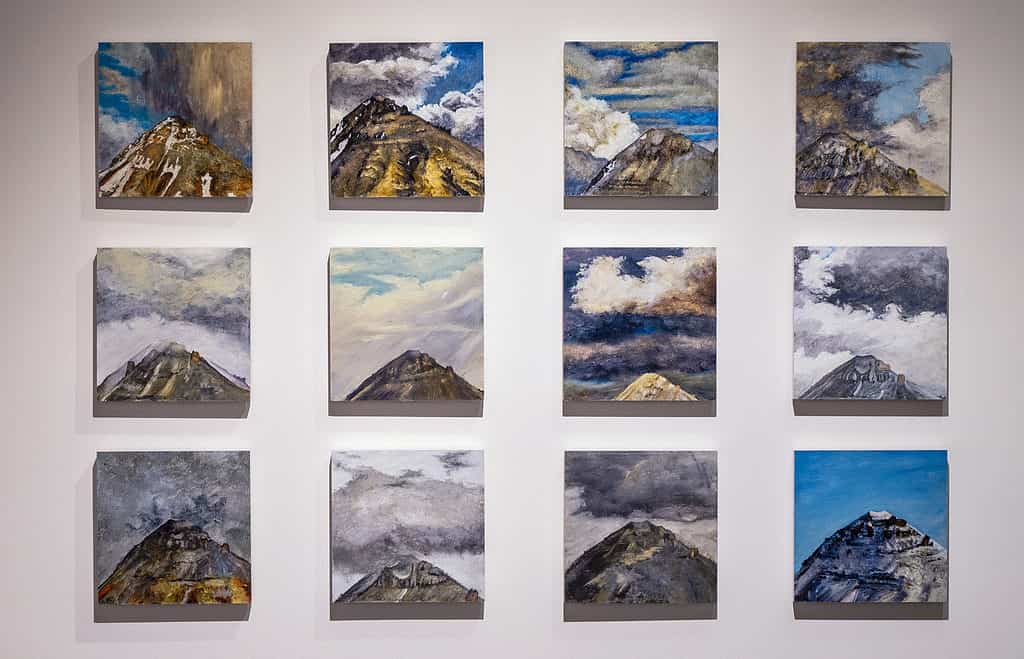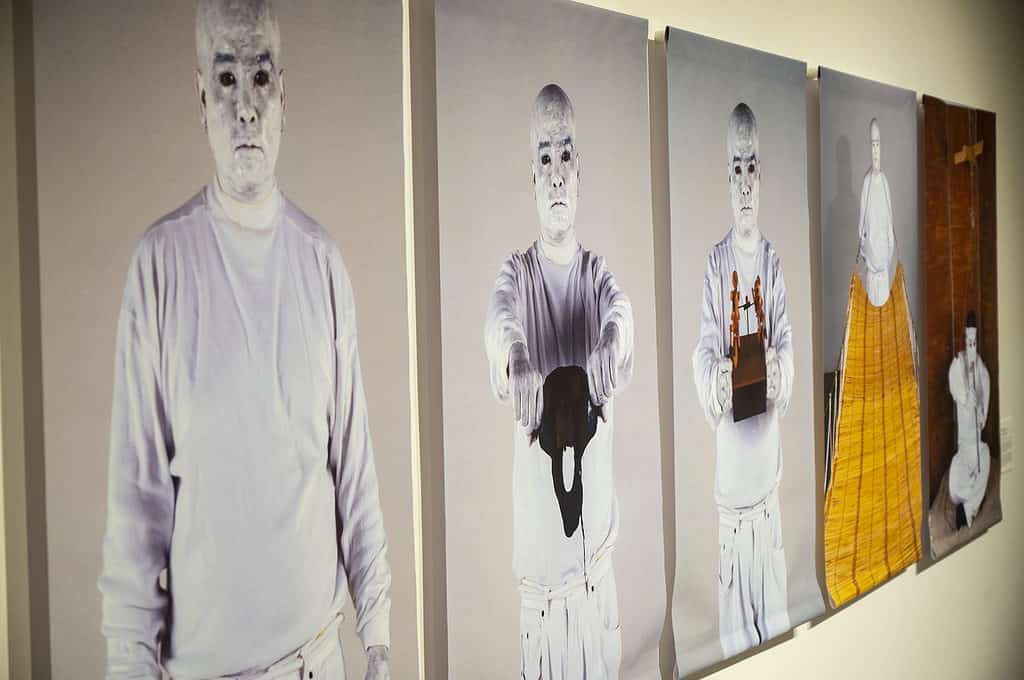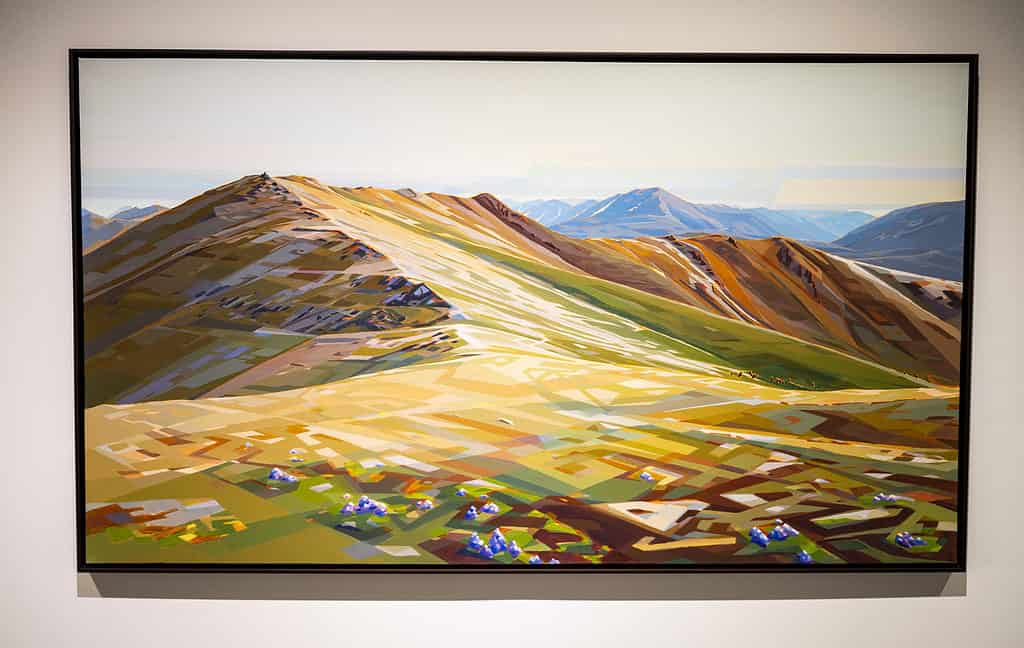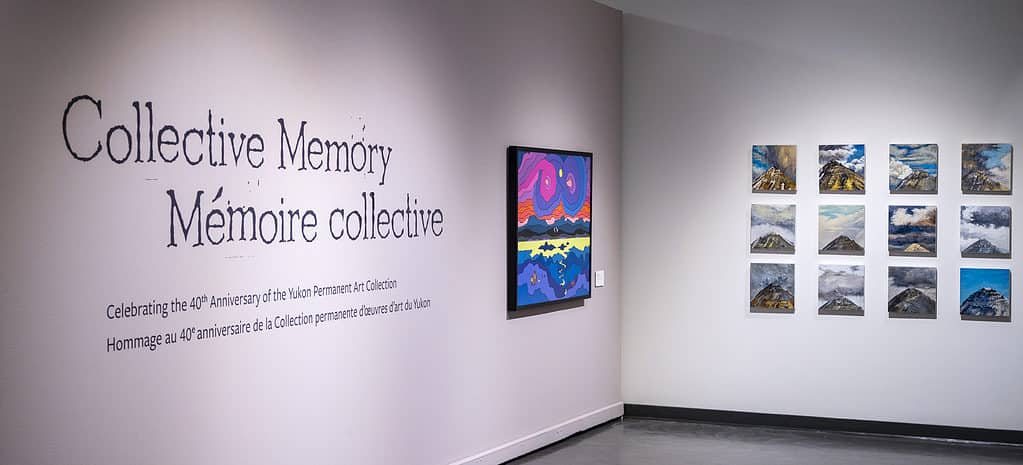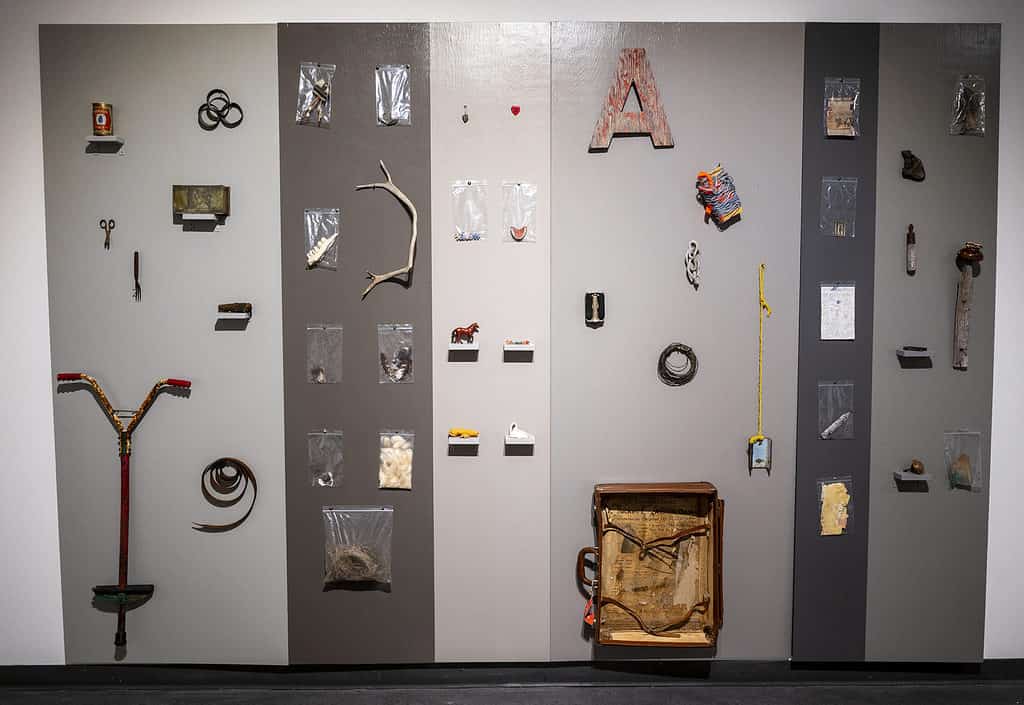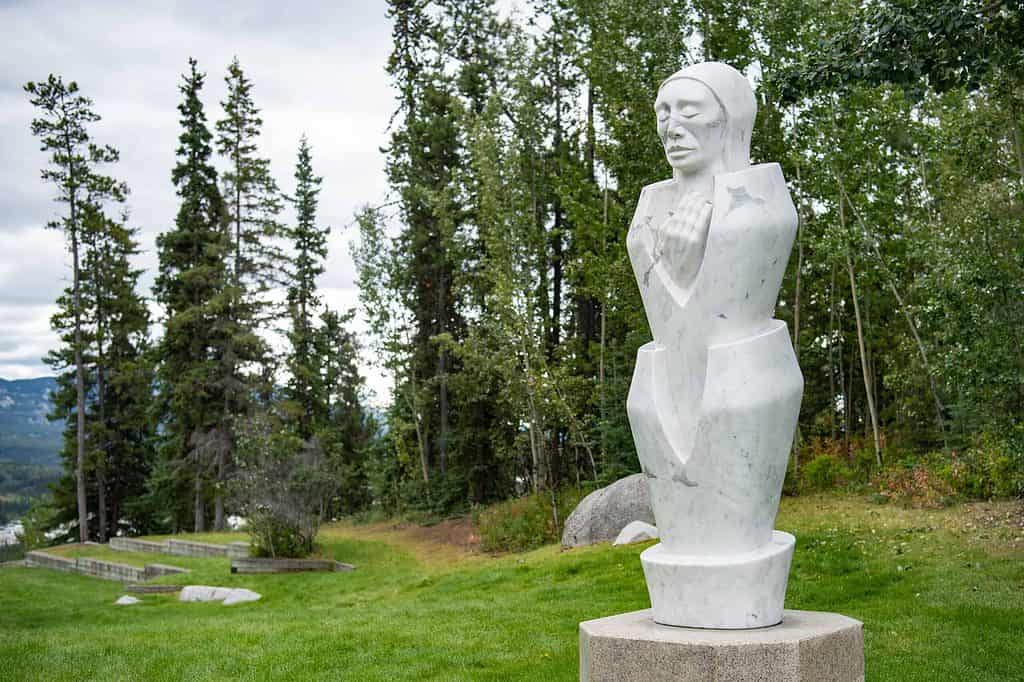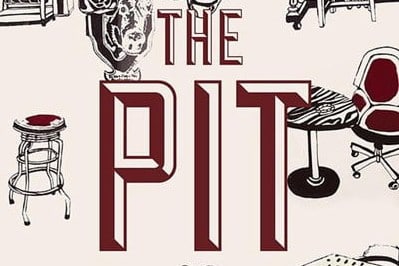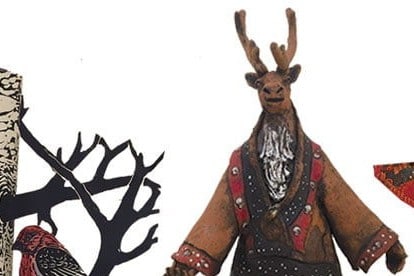In Collective Memory, an exhibition marking the 40th anniversary of the Yukon Permanent Art Collection, there is a leather jacket entitled “Blanche.” The piece, by Brenda Lee Asp, has a unique feature in its whale tail-shaped collar. When Asp started the jacket, her fashion design instructors were skeptical. They didn’t think such an unusual collar could be done. But as Asp started working with the leather, she knew through intuition how to shape the collar.
“… the process helped me to remember what I already knew about working with leather,” Asp says in her artist statement “It brought back memories of working with my grandmothers and it sparked knowledge that I didn’t realize was there.”
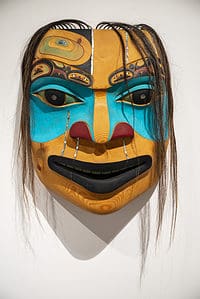
It’s stories like this that prompted visual arts curator Garnet Muething to call the exhibition Collective Memory. As she selected work for the show, Muething discovered connections and relationships amongst the work. “All of the memories and energy and experience that lives within each work that comes from the artist and carries through the collection and creates this collective memory that is there for people to draw from and to experience and to engage with.”
Muething suggests that memories arise from many things, including materials, stories, “motion of hands,” skills, tools, familiar and new places, and experiences of trauma, loss, healing and transition.
“These histories, events and motivations live within the works of art,” Muething says. “They are the memory of each artist’s voice and process. Together they create the collective memory of artistic responses to the Yukon experience.”
Collective Memory showcases about 20 per cent of the permanent art collection, which now contains more than 500 works of art. The exhibition is almost like a survey of the history of art in the Yukon since around the 1930s, when Kitty Smith created the untitled sculptures that are some of the collection’s oldest works.
Muething could have presented that history chronologically. Instead, she took a far more creative and interesting approach, arranging the roughly 100 works in the show according to themes she found arose organically. Collective Memory walks us through 40 years of art collecting by highlighting the interconnections between the works; for example, if they speak to family, a sense of place or a shared experience.
In the first gallery room, Muething found that the pieces relate to family, Elders and connections to the land.
A wonderful example of connection to family is Lena Moon’s moose hide and seal skin work “Purse.” In her artist statement, Moon acknowledges the contribution of her grandmother and aunts. “My grandmother always checked my work and if she was satisfied, I would know I’d done it right.” The beadwork pattern was Moon’s grandmother’s, while the purse itself is the artist’s own innovative design, featuring a beaded ric-rac pattern and a removable strap.
In exploring their connections to the land, artists inevitably turn to landscapes and interpretations of Yukon’s natural splendour.
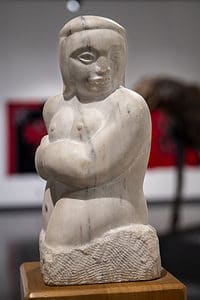
Printmaker Martha Ritchie has achieved an exhilarating, vibrant piece with her triptych “Sky I—Looking Upwards,” “Sky 2—Swan’s Flight” and “Sky 3—Heading South.” Ritchie’s skies are alive with swirling clouds, dizzying perspectives and wonderful details.
In the second room, Muething found connections among the work related to lived experiences, in particular, responses to trauma, loss and reconciliation.
Doug Smarch Jr.’s “Play your flute for me Indian” is a new addition to a series of large colour photographs called Erase. The series title refers to the Canadian government’s decision “to absorb the Indigenous body into the ‘body politic’ which is the Canadian Colonial System.” Smarch’s work is one of several in the exhibition, including Mary Caesar’s “Words and Names They Called Me” and Dennis Shorty’s “Float Plane,” that carry memories of the trauma of residential schools.
Ramon Joseph Santos’s “Before the Hunt” is a beautifully executed oil painting featuring a figure holding a rifle. The image contemplates the conflicted feelings that come with being a hunter. “Preparing for hunting—or preparing for death—is an overwhelming feeling,” Santos says. “It’s exciting, thrilling, sorrowful and lonesome.”
In the third and final room, Muething selected works addressing connection to place in terms of residency and exchange.
There are some light-hearted moments to be found, including Karen Thomas’s quirky “The Second Floor,” an ode to The Pit in Dawson.
“I love this piece because it’s disorienting and then you realize it’s the upstairs of The Pit and it all makes so much sense,” Muething says.
Faye Chamberlain conjures up spring in her gorgeous tufted piece called “Hints of Easter.” Chamberlain evokes “Tuktu’s spirit” in honour of the caribou whose hair and antler are transformed into a “floral fantasy” and a celebration of the vibrant flowers of spring.
From Chamberlain’s piece, I find myself drawing a connection with Teresa Vander Meer-Chassé’s beadwork-adorned moose antler, “Untitled (Resilience),” in the previous room, as well as Barbara Pratt’s colourful fibre work, “Autumn.”
This process of making connections happens with every piece I view, which is part of the wonder of experiencing this amazing show. Every piece in the exhibition has relationships with others, which are ours to discover as part of Yukon’s dynamic collective memory.

